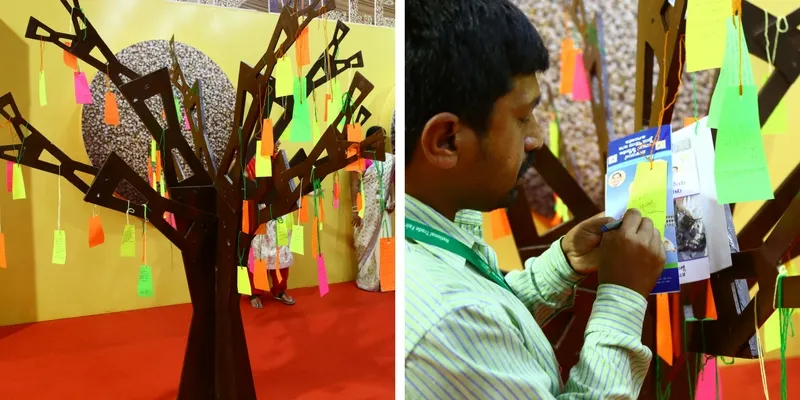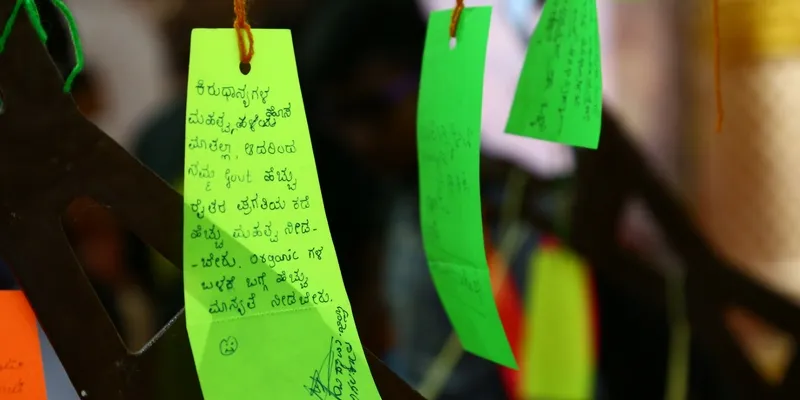The Dream Tree that stood tall has captured the dialogue started by the Organic and Millets fair
Erected on the first day of the National Trade Fair, the Dream Tree has dearly held onto the dreams and expectations that farmers and consumers now have for the future. Find out what people are saying.

The ongoing Organic and Millets National Trade Fair in Bengaluru, organised by the Government of Karnataka, has been drawing the eyes of many. Just the first two days of the fair had more than 30,000 curious visitors gathered around colourful stalls and digging into tasty millet treats.
Krishna Byre Gowda, Minister of Agriculture, spearheaded this three-day mela with one main intention:
These melas and gatherings are an ice-breaker to the consumers that there are healthy ways of consumption and that their benefits are quite impressive. This opportunity also empowers the farmers by showing them that the consumers and market have a demand, and they are then interested in cultivating organic food.
While the fair reaches its climax, there stands a ‘tree’ amidst the crowd, holding onto the dreams and expectations that the farmers and consumers alike are leaving with. The Dream Tree was erected on the first day of the fair to capture these dreams so that the Government can work to make them a reality.

The Dream Tree drew its significance from the ancient Indian tradition of tying ‘wishes’ to spiritually significant trees. Here, we look at some of the wishes that people are leaving behind (mostly anonymously) hoping for a healthier future, and empowered farmers.
Farmers need to get a good price for their products. Only when they are empowered will our nation progress,
says one wish, while supporting that is another with some data,
“A farmer get Rs 3,000 per quintal of same (little millet), whereas an equal amount of rice translates to Rs 32,000,” says Vijaya Kumara, wishing for millets to bring better prices for farmers, which can, of course, happen when consumers start choosing millets over rice.
“Increased subsidy for millets will encourage farmers to grow them,” says M. Basavaraju, while Eeranna T. adds, “It would be good if the Central and State Governments would stop giving away free rice when they want to promote millets. And we should also take conservation of lakes more seriously.”
Like this fair, more information and new ideas about agricultural practises, machinery, and bee-keeping should be given to the farmers,
wishes one, while another expects equally successful trade fairs on a larger scale in the country.

A consumer pens down her expectation - "I need millets to be reasonably priced. At present, they are beyond the reach of the common man. If millets are to become a staple food, this is necessary,” says Vani. Organic food tends to be costlier primarily because production is time and labour-intensive, and yield is lower during conversation years. But with increased demand, supply can be hiked, which can in turn leverage the current prices.
“Finally, millets are being spoken of and their usefulness is being communicated to this generation,” says D. Lingaraju. “It makes me happy to know that this forgotten grain is getting its due, and that, from being called kiridhanya (small grains), it is now being referred to as siridhanya (rich/healthy grains),” says a person from Tumkur, summing up the largely positive feedback the National Fair Trade has received.
“What do you have against your own?” asks Agriculture Minister Krishna Byre Gowda to the population, referring to our native millets, and urging consumers and farmers alike to make them cool again.







